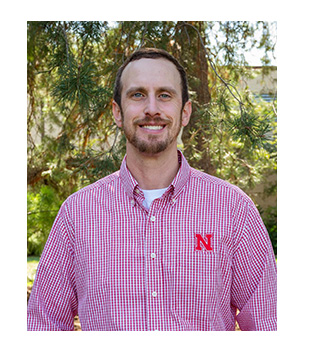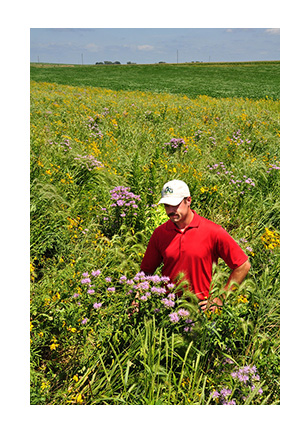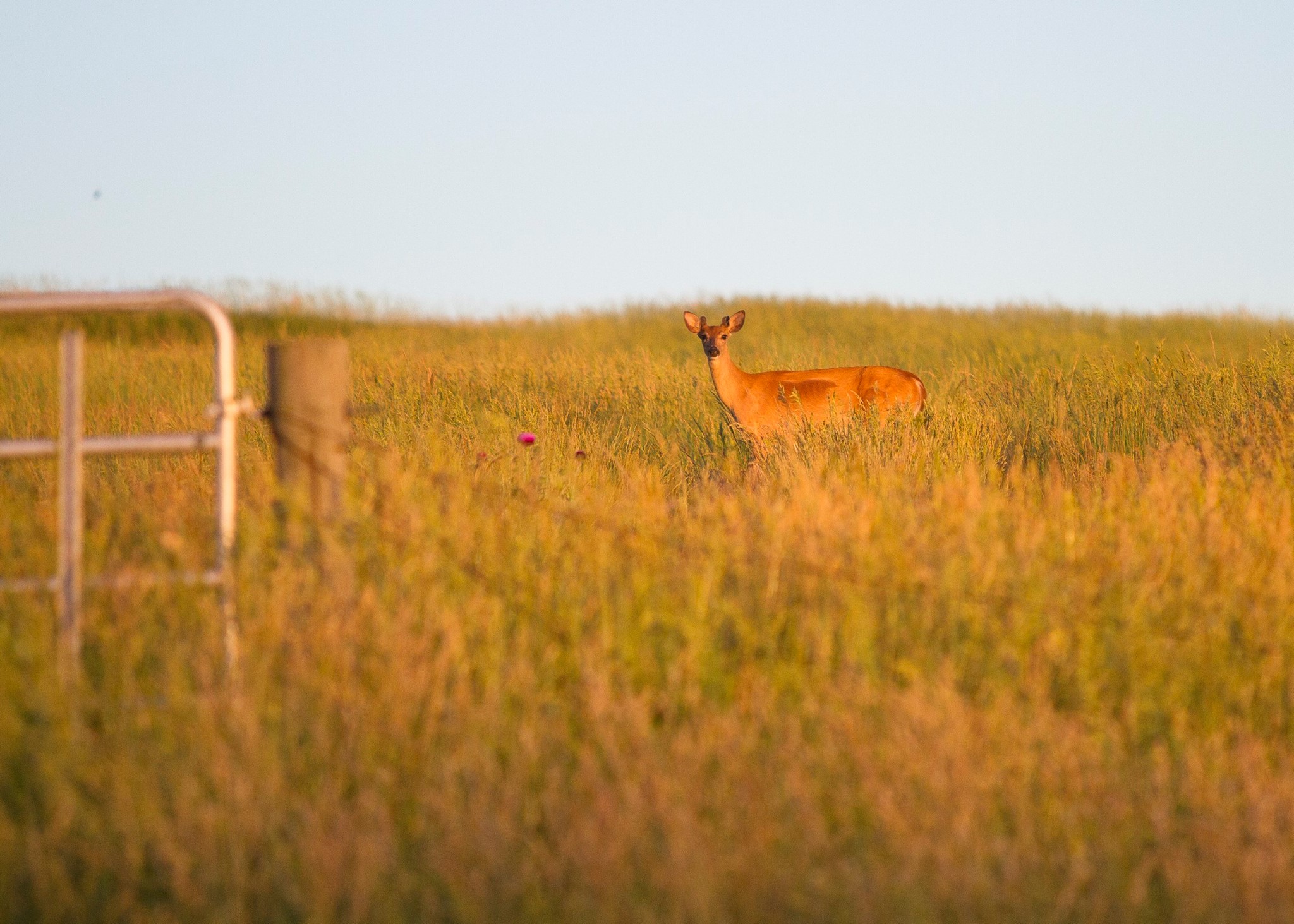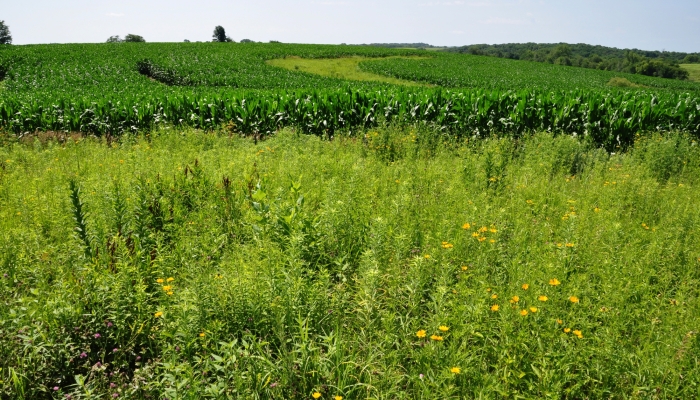Finding the Balance Between Ag Production and Natural Resource Conservation
 By: Dr. Andrew Little, Associate Professor and Wildlife Extension Specialist at the University of Nebraska-Lincoln
By: Dr. Andrew Little, Associate Professor and Wildlife Extension Specialist at the University of Nebraska-Lincoln
Nebraska’s farms and ranches are the lifeblood of our state’s economy—and with a few simple land management changes, landowners can benefit wildlife, improve soil health and water quality, and boost their bottom line. By implementing practices that keep working lands healthy and productive, landowners have the chance to leave a lasting legacy for future generations.
One of the easiest ways to improve wildlife habitat is to start with the least productive parts of your fields. You may already know where these areas are, or you can use yield monitor data to find consistently low-yielding or marginal acres. Converting these spots to prairie strips (CP-43), diverse cropping systems, grazing acres, or hunting leases can reduce input costs, improve profitability, and create habitat for pheasants, quail, meadowlarks, pollinators, and other wildlife.
Research shows planting just 10% of a field into 15- to 30-foot-wide prairie strips along contours can reduce soil erosion by up to 95%. Studies also show converting unproductive acres to lower-input options like perennial vegetation—often supported through conservation programs—can boost cropland profitability. This targeted conservation approach protects natural resources while strengthening your bottom line.
Today’s precision agriculture tools offer more opportunities. Many farms already use yield maps to track productivity; those same maps can highlight areas better suited for conservation programs. Talk with your local Natural Resource Districts (NRDs), the Nebraska Game and Parks Commission, Pheasants Forever & Quail Forever, or federal partners like the USDA can help you plan and often provide cost-share funding to implement habitat projects.
Even small actions make a difference. Leaving grassy waterways unmowed, planting native shrubs along fence lines, or creating corridors with food, nesting cover, and overwinter habitat gives wildlife what they need throughout the year—think wildlife management 365 days a year, not just one season. These features are especially important in working landscapes, where high-quality habitat is often scattered.
 Once you’ve established habitat on marginal acres, tools like prescribed fire or light disking can keep it healthy over time. Burning a 5- to 10-acre patch every few years rejuvenates native grasses and forbs, creating excellent nesting and brood cover for game birds. Prescribed fire can be done safely with help from local burn associations or conservation groups.
Once you’ve established habitat on marginal acres, tools like prescribed fire or light disking can keep it healthy over time. Burning a 5- to 10-acre patch every few years rejuvenates native grasses and forbs, creating excellent nesting and brood cover for game birds. Prescribed fire can be done safely with help from local burn associations or conservation groups.
Conservation works best when neighbors work together across fence lines. Wildlife need connected habitat to move through our working landscapes, so remember to think beyond your own fenceline and coordinate with your neighbors. By taking a landscape-scale approach together, you can create a network of habitat that supports more wildlife than isolated patches alone—think stepping stones of habitat for wildlife. These partnerships can also help reduce erosion, improve water quality, and boost multi-farm profitability—because a rising tide lifts all boats.
Finally, don’t underestimate the power of peer-to-peer learning. A 2022 survey by my Applied Wildlife Ecology and Spatial Movement (AWESM) Lab found Nebraska farmers and landowners prefer to get precision agriculture and conservation information from friends, family, and peers. Connecting with others who’ve tried these practices offers practical insights to help you succeed. Peer networks can also inspire more neighbors to get involved, expanding conservation beyond your own farm and building momentum for landscape-scale habitat efforts that make a bigger impact.
By taking small, practical steps to improve habitat, you can help wildlife thrive, protect Nebraska’s resources, and leave a lasting legacy. Reach out to your local NRD or wildlife biologist with Nebraska Game and Parks Commission, Pheasants Forever, or Quail Forever for guidance. Together, we can feed and fuel a growing world while ensuring the sustainability of our natural resources for future generations.


